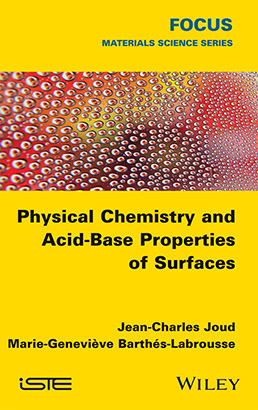
The study of the wettability of surfaces is widely used in technological applications such as metal–polymer interfaces, water management in fuel cells, the problems of adsorption in microelectronics as well as the applications of electrowettability.
After a reminder of the properties of ideal and real surfaces, this book presents an analysis of the different components involved in the expression of interfacial tension, especially of the solid–liquid or liquid–vapor type.
Several methods for measuring wettability are then presented and illustrated using examples leading to the determination of the different components of the substrate surface energy.
A review of the different experimental methods allowing us to determine the acid-base properties of the surfaces is proposed, with emphasis put on the most frequently used methods in the case of flat surfaces. Electrowettability and its different applications are then developed in detail, thus highlighting the importance of electric charges on the solid–liquid interfacial tension.
1. Wettability of an Ideal Surface: Overview.
2. Real Surfaces.
3. Components of the Surface Energy.
4. The Acid-Base Component in the Work of Adhesion.
5. Experimental Determination through Wettability Measurements.
6. Acid-Base Properties of Surfaces: Experimental Approaches.
7. Oxide–Solution Interfaces: Surface Charges.
8. Electrocapillarity Applications.
Jean-Charles Joud is Emeritus Professor at Grenoble-INP Phelma, in France and a specialist in the thermodynamics and physical chemistry of surfaces.
Marie-Geneviève Barthés-Labrousse is CNRS Research Director at the Institut de Chimie Moléculaire et des Matériaux d’Orsay in France and a specialist in surface reactivity.